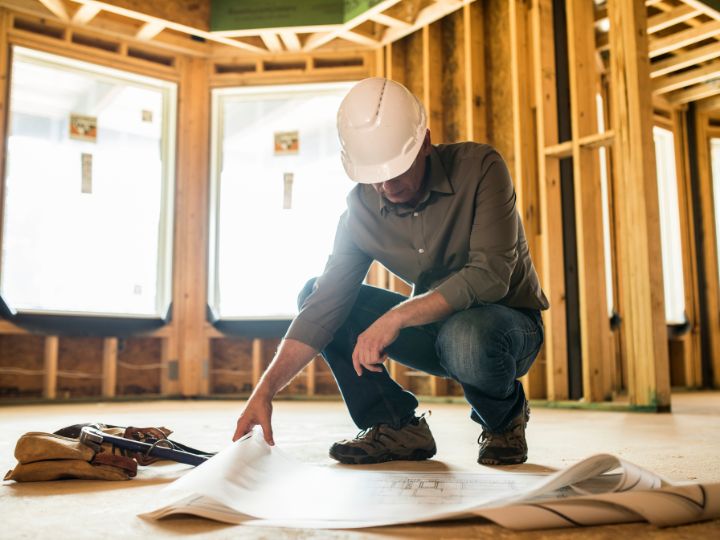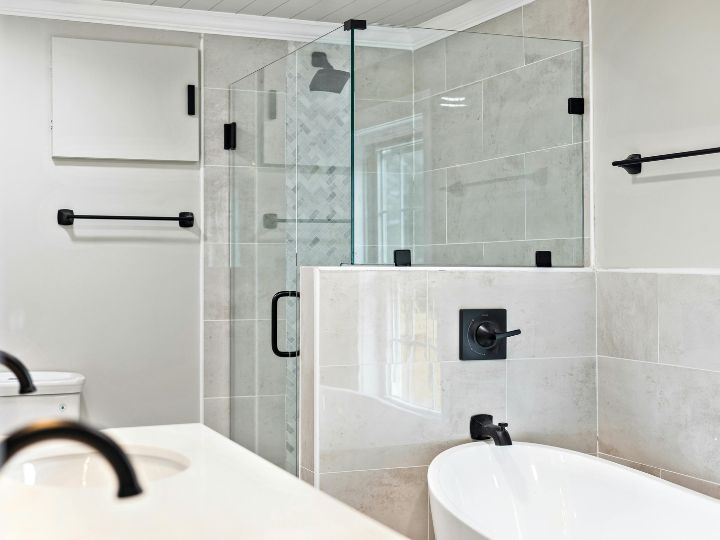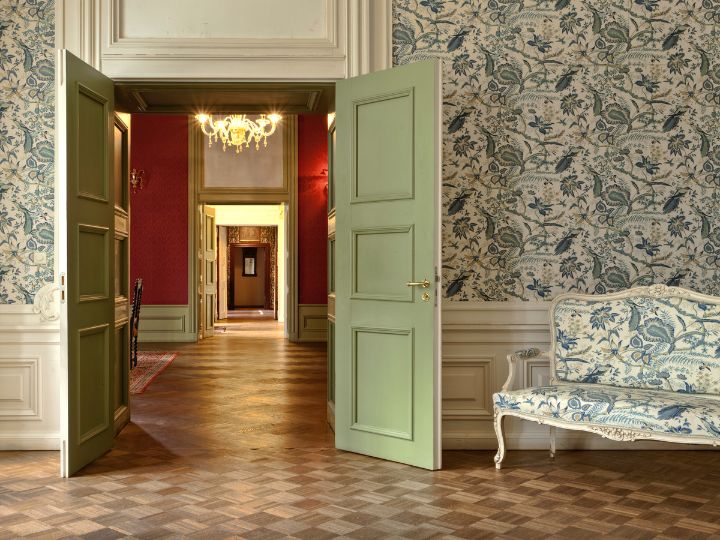
Design-Build vs. General Contractor: Which is Right for Your Phoenix Project?

When planning a major home renovation or construction project in the Phoenix area, one of the most crucial decisions you'll face is choosing between a design-build approach and working with a traditional general contractor. Both methods have their advantages, and the right choice depends on your specific project needs, budget, timeline, and personal preferences. Understanding the key differences between these approaches will help you make an informed decision that sets your project up for success.
Understanding the Traditional General Contractor Approach
The traditional general contractor method follows a linear process where design and construction are separate phases handled by different teams. In this approach, you typically start by hiring an architect or designer to create your project plans. Once the design is complete and approved, you then hire a general contractor to execute the construction based on those plans.
How the Traditional Process Works
With a traditional general contractor, your project unfolds in distinct phases. First, you work with an architect or designer to develop detailed plans, select materials, and finalize all design elements. This phase can take several weeks to months, depending on the complexity of your project. Once designs are complete, you'll solicit bids from general contractors, review proposals, and select a contractor to build your project.
The general contractor then becomes responsible for obtaining permits, scheduling subcontractors, managing the construction timeline, and ensuring quality control throughout the build process. While you maintain separate relationships with both the design team and the construction team, the general contractor serves as the primary point of contact during construction.
Advantages of the Traditional Approach
One significant advantage of working with a traditional general contractor is the competitive bidding process. Since you can obtain quotes from multiple contractors based on the same set of plans, you can more easily compare pricing and select the most cost-effective option for your budget. This transparency in pricing helps ensure you're getting fair market value for your construction work.
The traditional approach also provides clear separation of responsibilities. Your architect or designer focuses solely on creating the best possible design for your needs, while the general contractor concentrates on efficient construction execution. This specialization can lead to higher quality outcomes in both design and construction phases.
Additionally, if issues arise during construction, you have the architect available to provide guidance and potentially modify plans as needed. This can be particularly valuable for complex projects where unexpected challenges might require design adjustments.
Potential Drawbacks
Despite its advantages, the traditional general contractor approach can present some challenges. The separate design and construction phases often extend the overall project timeline, as you cannot begin construction until design is completely finalized. Changes during construction can be costly and complicated, as they typically require architect approval and may impact the contractor's original bid.
Communication can also become more complex when working with separate design and construction teams. Miscommunications between the architect and contractor can lead to delays, change orders, and budget overruns. Additionally, if problems arise, you may find yourself caught in the middle between the designer and contractor when determining responsibility and solutions.
Exploring the Design-Build Approach
The design-build method streamlines the construction process by combining design and construction services under one roof. With this approach, a single team handles your entire project from initial concept through final completion, creating a more integrated and collaborative experience.
How Design-Build Works
In a design-build arrangement, your contractor manages both the design development and construction phases of your project. The process typically begins with an initial consultation where you discuss your vision, goals, and budget with the design-build team. They then develop concepts, create detailed plans, and provide construction estimates all within their integrated workflow.
Since the same team handles both design and construction, they can begin preliminary construction activities even while finalizing design details. This parallel processing can significantly reduce your overall project timeline compared to the traditional sequential approach.
Benefits of Design-Build
The most significant advantage of design-build is the streamlined communication and single point of responsibility. You work with one team throughout the entire process, eliminating the potential for miscommunication between separate design and construction entities. This integrated approach often leads to smoother project execution and faster problem resolution when challenges arise.
Design-build also typically results in faster project completion. Since the construction team is involved from the beginning of the design process, they can identify potential construction challenges early and design solutions that avoid costly changes later. The ability to overlap design and construction phases can reduce your total project timeline by weeks or even months.
Cost control is another significant benefit. Design-build teams can provide more accurate early cost estimates because the builders are involved in the design process from the start. They understand the cost implications of design decisions and can guide you toward choices that maximize value within your budget. This integrated approach often results in fewer change orders and unexpected costs during construction.
Potential Design-Build Limitations
The design-build approach does have some potential drawbacks to consider. Since you're working with a single entity, you have fewer opportunities for competitive bidding on the construction portion of your project. This means you'll need to carefully evaluate the design-build firm's pricing to ensure it aligns with market rates.
Some homeowners also prefer the checks and balances that come with having separate design and construction teams. With design-build, the same entity that designs your project also builds it, which means there's less independent oversight of construction quality and adherence to plans.
Key Factors to Consider for Your Phoenix Project
When deciding between design-build and traditional general contractor approaches for your Phoenix area project, several factors should influence your decision.
Project Complexity and Scope
For simpler projects with straightforward requirements, either approach can work well. However, for complex renovations involving structural changes, multiple systems updates, or intricate design elements, design-build often provides advantages through better coordination and communication.
Large-scale projects like complete home remodels or major additions particularly benefit from the integrated design-build approach, as these projects require extensive coordination between multiple trades and systems. The complexity of Phoenix-area projects is often increased by local building codes, HOA requirements, and the need to work within existing home systems that may be decades old.
Timeline Considerations
If timeline is a critical factor for your project, design-build typically offers faster completion. The ability to overlap design and construction phases can save significant time, particularly important if you're living in your home during renovation or have specific deadline requirements.
Phoenix homeowners often prefer to complete major renovations before the intense summer heat arrives, making timeline efficiency particularly valuable. Design-build's faster completion can help ensure your project finishes before peak summer temperatures make construction more challenging and expensive.
Budget and Cost Control
Both approaches can deliver cost-effective results, but they achieve cost control through different mechanisms. Traditional general contractor bidding provides transparency and competitive pricing, while design-build offers better cost control through integrated planning and reduced change orders.
Consider your comfort level with pricing transparency versus integrated cost management when making this decision. If you prefer to see exactly how much each element costs and want multiple competitive bids, the traditional approach may suit you better. If you value comprehensive cost management and want to minimize unexpected expenses, design-build might be preferable.
Communication Preferences
Your preferred communication style should also influence your decision. If you enjoy working with multiple specialists and don't mind coordinating between different teams, the traditional approach can work well. However, if you prefer streamlined communication and a single point of contact, design-build offers clear advantages.
Making the Right Choice for Your Phoenix Home
The decision between design-build and traditional general contractor ultimately depends on your specific project requirements, personal preferences, and priorities. Both approaches can deliver excellent results when executed by qualified professionals.
For homeowners who prioritize speed, streamlined communication, and integrated cost management, design-build often provides the better experience. This approach particularly suits complex projects, tight timelines, and homeowners who prefer working with a single accountable team.
Traditional general contractor arrangements work well for homeowners who want competitive bidding, prefer working with separate design and construction specialists, or have projects where design requirements are fully defined before construction begins.
Working with Phoenix Area Professionals
Regardless of which approach you choose, selecting the right team is crucial for project success. Look for contractors and design-build firms with extensive local experience, proper licensing and insurance, and strong references from recent projects similar to yours.
The Phoenix area presents unique challenges including extreme heat, specific soil conditions, local building codes, and HOA requirements that vary significantly between communities. Working with professionals who understand these local factors is essential for successful project completion.
When evaluating potential contractors or design-build firms, ask about their experience with projects similar to yours, their approach to timeline and budget management, and their process for handling changes or unexpected challenges. Request references from recent clients and take time to review their previous work quality.
Ready to Start Your Phoenix Project?
Whether you're considering a complete home remodel, kitchen renovation, bathroom upgrade, or home addition, choosing the right approach and team is critical for success. The design-build approach offers compelling advantages for many homeowners, particularly those seeking streamlined communication, faster completion, and integrated cost management.
If you're exploring renovation options in the Tempe or Phoenix area, The Contractor Guys offers comprehensive design-build services that combine expert design capabilities with quality construction execution. Their integrated approach has helped hundreds of families transform their homes while maintaining budget control and timeline efficiency. From initial consultation through final completion, their team manages every aspect of your project with the attention to detail and customer focus that has earned them recognition as one of Tempe's top contractors.
To learn more about how the design-build approach could benefit your specific project, consider scheduling a consultation to discuss your vision, timeline, and budget requirements. The right team can help you navigate the complexities of home renovation and create the space you've always envisioned.
Ready to transform your home? Contact The Contractor Guys for a consultation about your Phoenix area renovation project. Their experienced team can help you determine whether design-build or traditional construction approaches best suit your needs and guide you through every step of the renovation process.
Latest Blogs
Transform your dream home into reality with our premier renovation services!
Book a call with us today and let's create the perfect space tailored just for you.

.svg)
.svg)



